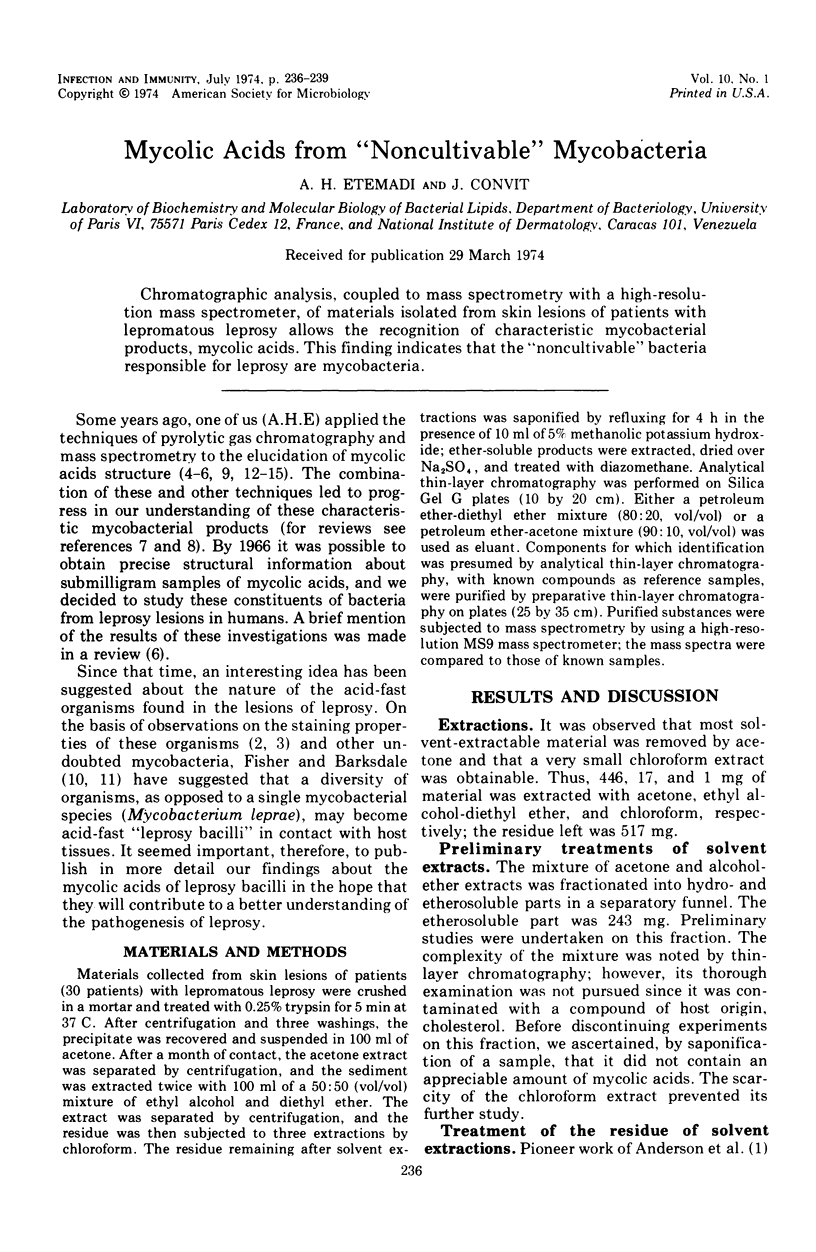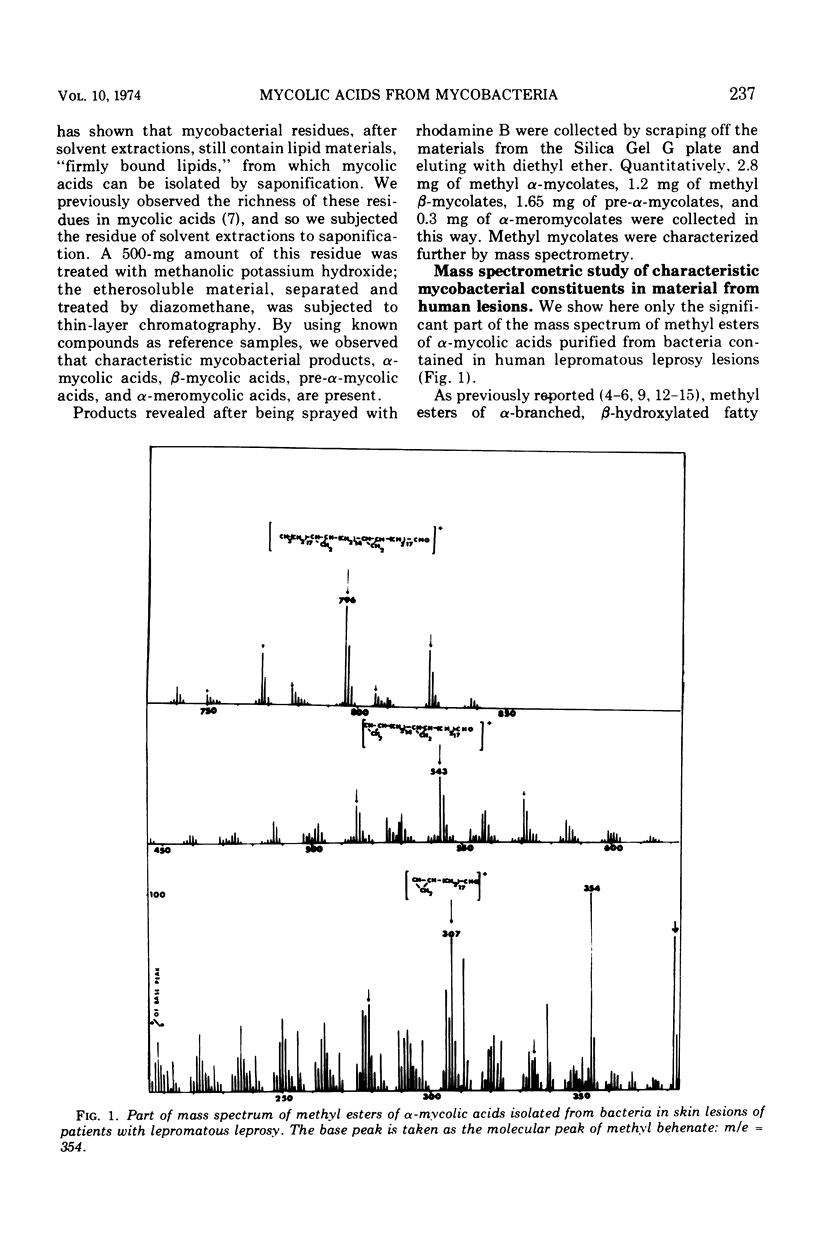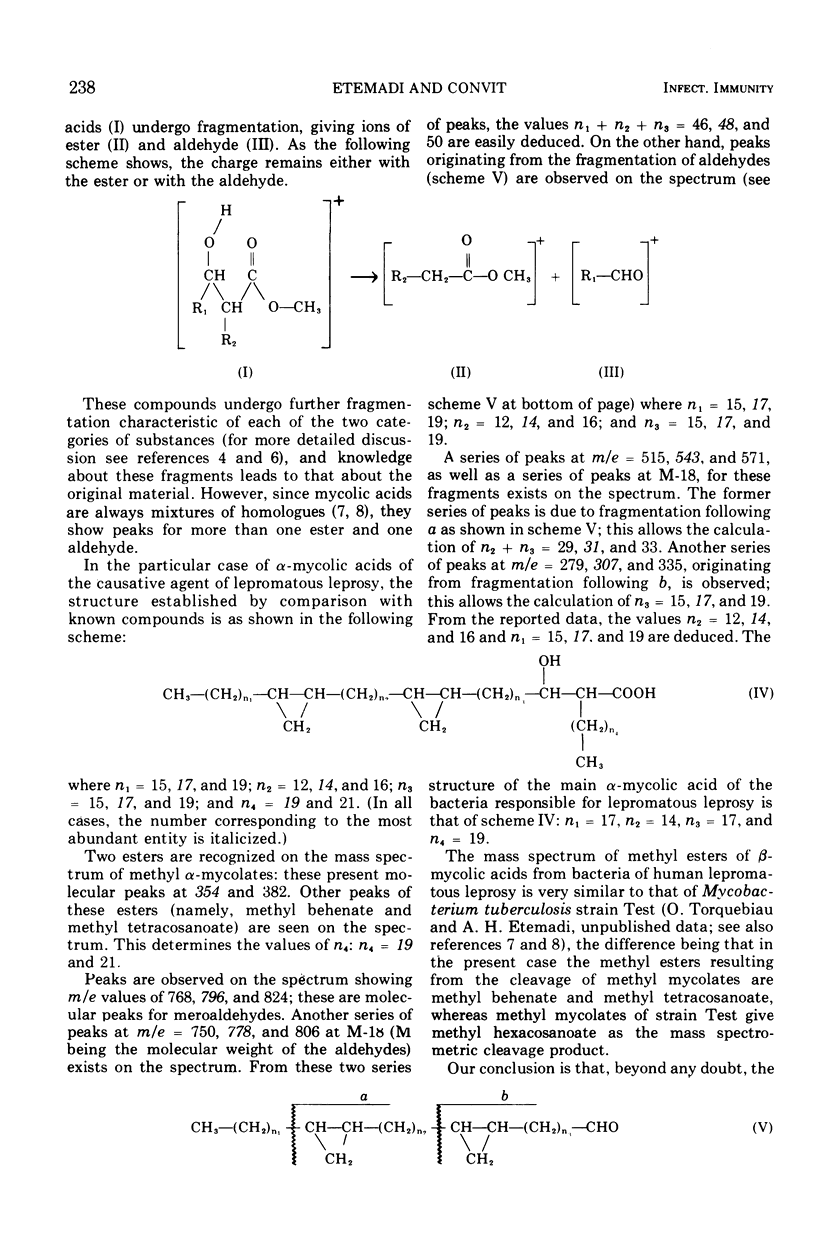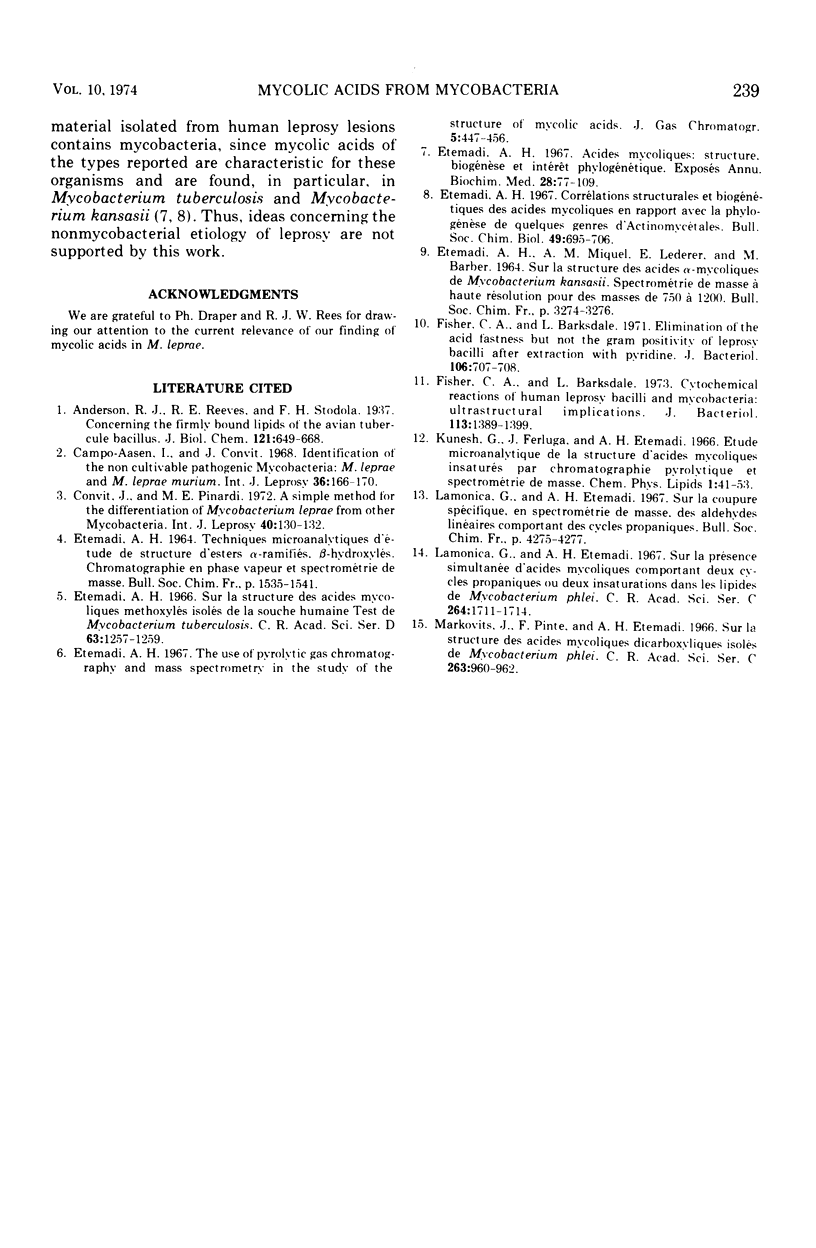Abstract
Chromatographic analysis, coupled to mass spectrometry with a high-resolution mass spectrometer, of materials isolated from skin lesions of patients with lepromatous leprosy allows the recognition of characteristic mycobacterial products, mycolic acids. This finding indicates that the “noncultivable” bacteria responsible for leprosy are mycobacteria.
Full text
PDF



Selected References
These references are in PubMed. This may not be the complete list of references from this article.
- Campo-Aasen I., Convit J. Identification of the noncultivable pathogenic mycobacteria M. leprae and M. lepraemurium. Int J Lepr Other Mycobact Dis. 1968 Apr-Jun;36(2):166–170. [PubMed] [Google Scholar]
- Etemadi A. H. Corrélations structurales et biogénétiques des acides mycoliques en rapport avec la phylogenèse de quelques genres d'Actinomycétales. Bull Soc Chim Biol (Paris) 1967;49(6):695–706. [PubMed] [Google Scholar]
- Etémadi A. H. Les acides mycoliques structure, biogenèse et intérêt phylogénétique. Expos Annu Biochim Med. 1967;28:77–109. [PubMed] [Google Scholar]
- Fisher C. A., Barksdale L. Cytochemical reactions of human leprosy bacilli and mycobacteria: ultrastructural implications. J Bacteriol. 1973 Mar;113(3):1389–1399. doi: 10.1128/jb.113.3.1389-1399.1973. [DOI] [PMC free article] [PubMed] [Google Scholar]
- Fisher C. A., Barksdale L. Elimination of the acid fastness but not the gram positivity of leprosy bacilli after extraction with pyridine. J Bacteriol. 1971 May;106(2):707–708. doi: 10.1128/jb.106.2.707-708.1971. [DOI] [PMC free article] [PubMed] [Google Scholar]


